It is crucial to maintain flexibility as you get older for your overall health and well-being. As one ages, muscles and joints tend to become less flexible, which could restrict your range of motion and raise the chances of getting injured. Adding regular stretching exercises to your daily routine can ease muscle tightness, boost flexibility, and enhance posture, all of which are more critical as you grow older. Stretching also enhances blood flow and aids your body in recovering after physical activities.
The key to effective stretching lies in consistency and proper technique. Regularly stretching the major muscle groups will help maintain or even improve flexibility as you age. By focusing on full-body stretches, you can address tightness in multiple areas simultaneously, ensuring that your entire body stays limber. These stretches target muscles from the neck down to the calves, ensuring that no area is left unattended.
To get the most out of your stretches, perform them at least three to four times a week, holding each one for 20 to 30 seconds. Whether you’re starting your day or winding down after a workout, incorporating these stretches into your routine will help keep your body agile, minimize discomfort, and improve your overall quality of life.
Standing Forward Bend
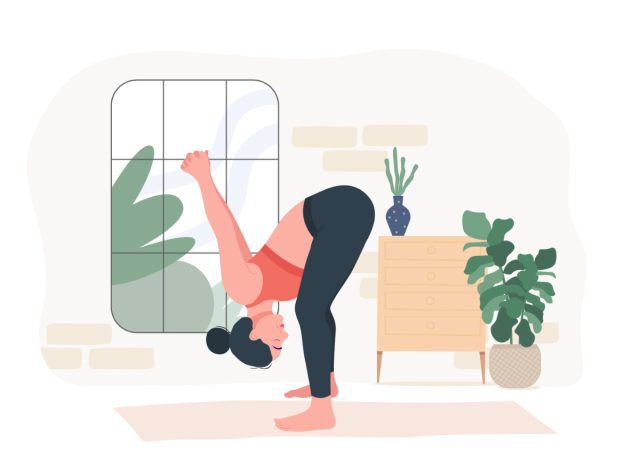

This stretch focuses on the hamstrings, lower back, and calves, improving flexibility in the posterior chain while relieving tension in the spine.
- Stand tall with your feet hip-width apart.
- Inhale deeply, then exhale as you bend forward at the hips.
- Allow your arms to hang down toward the floor, and try to touch your toes without rounding your back. You can also keep them clasped and raised behind your back.
- Keep your knees slightly bent to avoid straining the hamstrings.
- Hold for 20 to 30 seconds, then slowly rise back to standing.
Cat-Cow Stretch
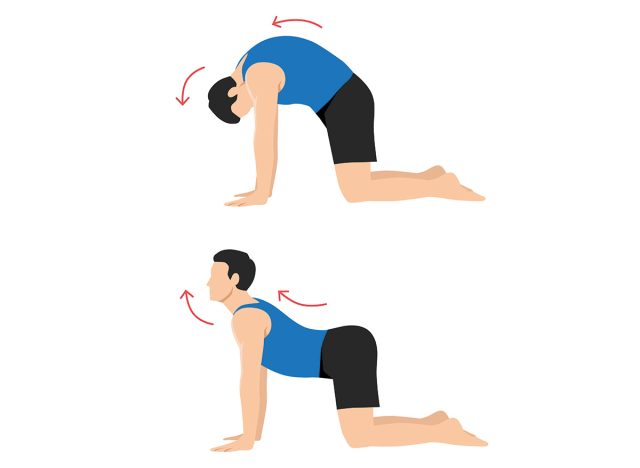

The cat-cow stretch improves flexibility in the spine, releases tension in the neck, and stretches the back muscles. It’s also a gentle way to mobilize your spine.
- Start on your hands and knees, with your wrists directly under your shoulders and knees under your hips.
- Inhale as you arch your back, dropping your belly toward the floor and lifting your head and tailbone upward.
- Exhale as you round your back, tucking your chin to your chest and pulling your belly toward your spine.
- Alternate between these two positions, moving slowly with your breath.
- Repeat 5 to 10 times.
Seated Forward Fold


This stretch targets the hamstrings and lower back, promoting greater flexibility in the legs and reducing tightness in the lumbar spine.
- Sit on the floor with your legs extended straight in front of you.
- Inhale as you sit up tall, then exhale and hinge forward at your hips, reaching for your toes.
- Keep your back straight and avoid hunching over.
- Hold the stretch for 20 to 30 seconds, feeling the stretch in your hamstrings and lower back.
- Return to the seated position slowly.
Shoulder Stretch
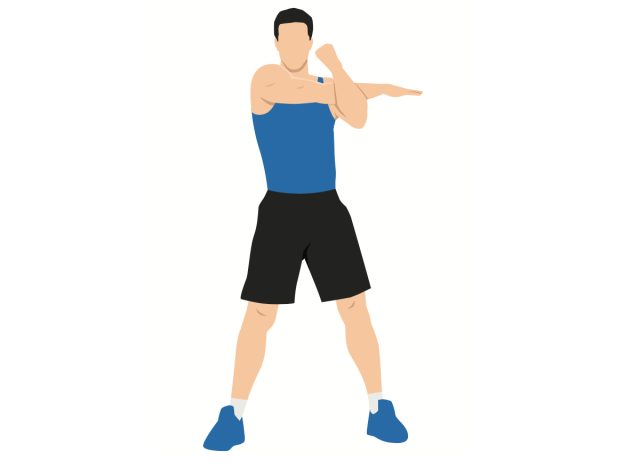

Focusing on the shoulders, this stretch relieves tension and improves flexibility, which is particularly important for preventing tightness from daily activities or prolonged sitting.
- Stand tall or sit in a chair with your feet flat on the ground.
- Reach your right arm across your body, keeping it straight.
- Use your left hand to gently press your right arm closer to your chest.
- Hold for 20 to 30 seconds, then switch to the other arm.
- Relax your shoulders and breathe deeply throughout.
Child’s Pose
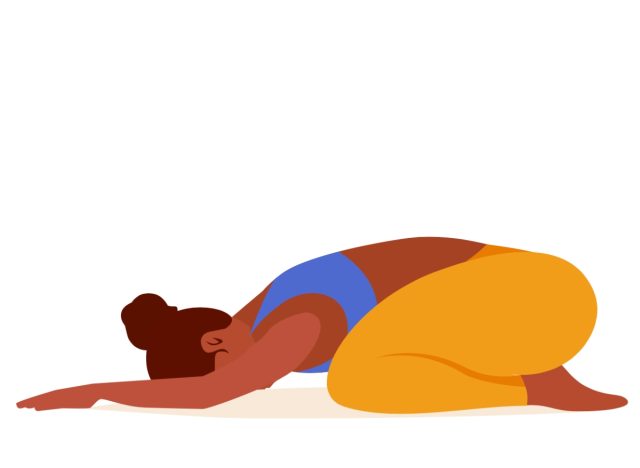

Child’s pose stretches the hips, thighs, and lower back. It’s a restorative position that can also help with relaxation and mental clarity.
- Begin on your hands and knees in a tabletop position.
- Spread your knees wide apart and sit back onto your heels, extending your arms forward.
- Allow your forehead to rest on the mat as you relax into the stretch.
- Hold this position for 30 seconds to a minute, breathing deeply.
- Return to your starting position by slowly lifting your torso.
Cobra Stretch
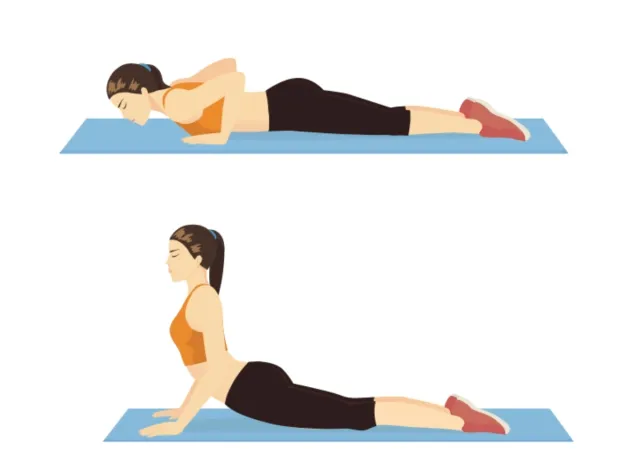

This stretch improves flexibility in the lower back and opens the chest, helping to combat the effects of slouching or sitting for long periods.
- Lie face down on the floor with your hands placed under your shoulders.
- Press into your hands and lift your chest off the ground, keeping your elbows slightly bent.
- Stretch your chest forward while keeping your hips on the floor.
- Hold for 20 to 30 seconds, then lower your body back down.
- Repeat 2 to 3 times if desired.
Hip Flexor Stretch
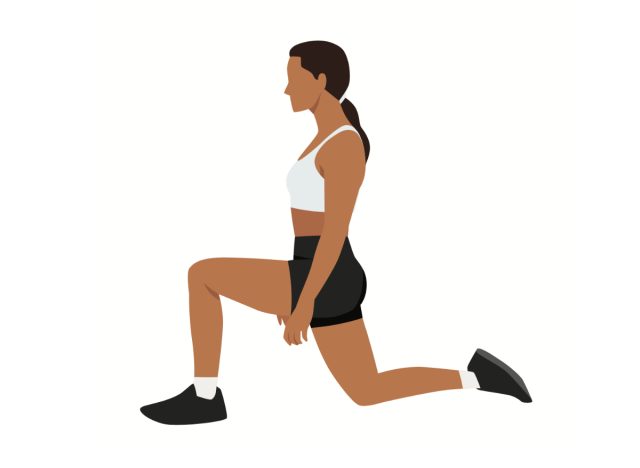

As you age, tight hip flexors can lead to lower back pain and poor posture. This stretch targets the hips and thighs to improve flexibility in these areas.
- Start kneeling with your right foot forward and your left knee on the ground.
- Shift your weight forward until you feel a stretch in the front of your left hip.
- Keep your torso upright and engage your core to avoid overarching your lower back.
- Hold for 20 to 30 seconds, then switch legs.
- Perform 2 to 3 rounds per leg.
Neck Stretch
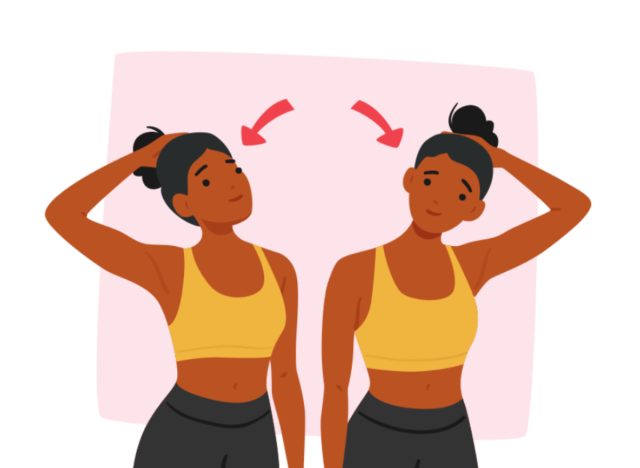

This gentle stretch alleviates tension in the neck, which can become stiff from poor posture or prolonged periods at a desk.
- Sit or stand up straight with your shoulders relaxed.
- Slowly tilt your head to the right, bringing your ear toward your shoulder.
- Use your right hand to gently pull your head down for a deeper stretch.
- Hold for 20 to 30 seconds, then switch sides.
- Repeat 2 to 3 times per side.
Quadriceps Stretch
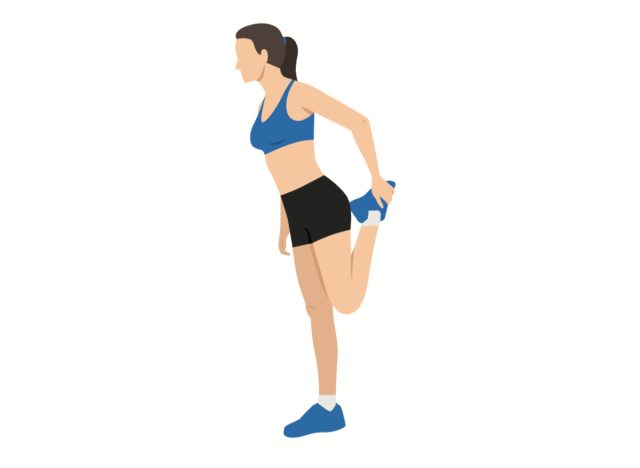

This stretch helps lengthen the quads, which can tighten from sitting or exercising, while also improving knee flexibility.
- Stand tall, holding onto a chair or wall for balance if necessary.
- Bend your right knee and grab your ankle behind you.
- Pull your ankle toward your glutes, keeping your knees together.
- Hold the stretch for 20 to 30 seconds, then switch legs.
- Repeat 2 to 3 times per leg.
Downward Dog
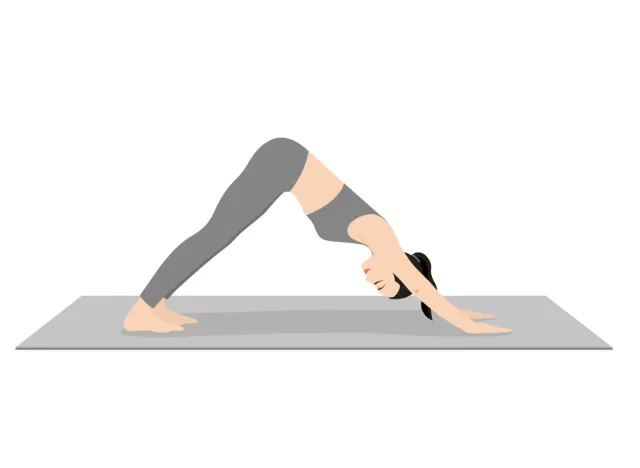

Downward dog stretches the entire body, focusing on the hamstrings, calves, shoulders, and back. It’s a great full-body stretch that also helps build strength in the arms and core.
- Begin on your hands and knees in a tabletop position.
- Lift your hips up and back, straightening your legs to form an inverted “V” shape with your body.
- Keep your hands shoulder-width apart and your feet hip-width apart.
- Hold the position for 20 to 30 seconds, breathing deeply.
- Return to the tabletop position by lowering your hips and knees to the ground.
Frequently Asked Questions (FAQs)
Why is flexibility important as we age?
Flexibility plays a crucial role in maintaining overall mobility and reducing the risk of injuries as we grow older. It helps in improving range of motion in the joints, posture, and muscle function. Flexibility exercises can also alleviate muscle stiffness and increase blood flow to the muscles.
How often should I perform these stretches?
It is recommended to incorporate flexibility exercises into your routine at least 2-3 times per week. Consistency is key to reaping the benefits of improved flexibility. However, listen to your body and adjust the frequency based on your comfort level and fitness goals.
Is it normal to feel discomfort while stretching?
While some mild discomfort or tension is common during stretching, it should not be painful. Stretching should never cause sharp or intense pain. If you experience pain, stop the stretch immediately. It’s important to differentiate between discomfort and pain to prevent injuries.
Can stretching alone improve flexibility?
While stretching is a vital component of improving flexibility, combining it with other forms of exercise, such as strength training and cardiovascular workouts, can enhance overall flexibility and functional fitness. A well-rounded fitness routine that includes various types of exercises is recommended for optimal results.
Should I consult a physician before starting these stretches?
If you have any existing medical conditions, injuries, or concerns about your health, it is advisable to consult with a healthcare provider or a physical therapist before beginning any new exercise regimen, including stretching exercises. They can provide guidance tailored to your individual needs and ensure your safety.






